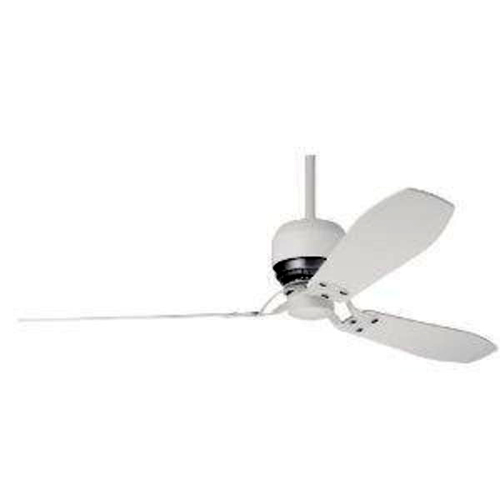
With temperatures already flirting with the 90s this summer and the cost of energy sky-high, East Enders are looking for ways to cut back while keeping cool. And like any eco-friendly resident will say, sometimes cranking the air conditioning feels like nothing but guilt.
But don’t sweat it. One efficient alternative to air conditioners is ceiling fans. And according to Anthony Leo, owner of Leo’s Electric in Southampton, having a ceiling fan in every room in a house doesn’t use even a quarter of the energy an air conditioner uses.
“The electric on the AC costs way more than the electric on a fan,” Mr. Leo said during a recent interview. “And fans have dual operation. The fan blows cool air down on you, and in the winter, having it on low speed takes the heat in the air and pushes it back down on you.”
Ceiling fans use only a fraction of the energy that an air conditioner does. According to a study on michaelbluejay.com, while a central air conditioner uses 3,500 watts per hour of continuous use, a ceiling fan uses 75 watts, which is 1/46 the amount of energy.
Ceiling fans also induce better air circulation and maintain a comfortable temperature, according to Amanda Guglielmi, a sales representative at Suffolk Designer Lighting in Southampton.
“When you use the ceiling fan and you leave it on all the time, it keeps the room at a more even temperature so the AC doesn’t kick itself on,” she said during a recent interview. “It keeps the room drier, too.”
Mr. Leo and Ms. Guglielmi both suggested brands such as Hunter and Casablanca.
“They are popular by design and functionality,” Ms. Guglielmi said. She added that consumers should look for Energy Star-rated motors, which are environmentally friendly and are available for nearly every brand of ceiling fan.
Revco sales representative Brieanne Stevens advised to also properly specify the size of the room when shopping for a fan.
“The max performance depends on dimensions, whether it be floor-to-ceiling height, size of the room, things like that,” she said. “Also, it’s not the number of blades but more the pitch, which is the angle of the blade.”
To maximize ceiling fan efficiency, Ms. Guglielmi said that she keeps her own fan on the lowest speed, which draws the air and cools it down.
Mr. Leo said that turning off the air conditioner completely is not necessary.
“People are so used to the AC that if just the fan is on, it wouldn’t make much of a difference,” he said.
Instead, Ms. Guglielmi suggested that keeping the ceiling fan on while keeping the AC on its lowest setting would be a good option for those who still desire air conditioning. She said that turning the AC off and then inevitably on again expends more energy than keeping it on at minimal power.
Ceiling fans are eco-friendly but aesthetics play a significant role as well. Perhaps the look of a fan adds elegance to a room, according to Ms. Stevens.
“They’ve always been pretty popular,” she said. “I like the look in living rooms and dens.”
Ms. Stevens reported that she has noticed a trend with that she describes as “a more modern three blade.” She said the model that is particularly popular here on the East End is the Tribeca by Hunter.
In the end, whether it is about saving money, living a more green lifestyle, or just for the aesthetics of it; ceiling fans and the Hamptons will always go hand in hand.